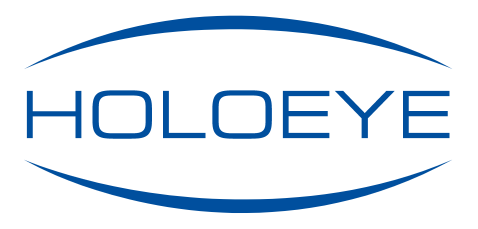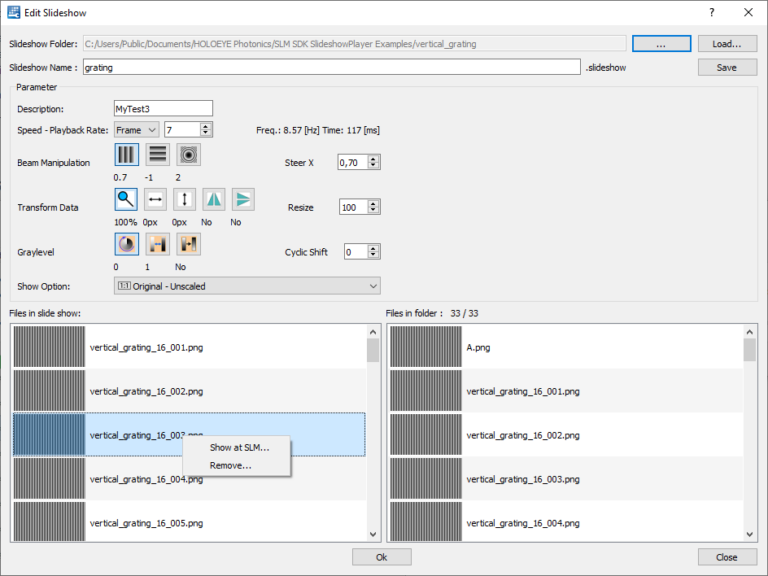SLM Slideshow Player
In fact all HOLOEYE Spatial Light Modulator devices can simply be addressed like an external monitor using the standard HDMI or DisplayPort interface of the graphics card and standard image viewer software could be used to address functions or images on the SLM. However, most standard image viewer software is intended for an optimized display of photographic images and in many cases tries to sharpen the image, increase contrast and smooth transitions between images. These features are nice to view your vacation images but for using an SLM, the exact display of gray values / phase values is needed.
The SLM Slideshow Player software is intended to ease the display of images and image sequences on HOLOEYE Spatial Light Modulator devices without any automated influence on the images. These image files may represent phase maps (if the SLM is set up as a phase modulating device) or amplitude distributions (if the SLM is set up as an amplitude modulating device utilizing a polarizer).
Version 2 of the HOLOEYE Slideshow player is based on the SLM Display SDK and features some additional built-in image manipulation and phase overlay functionality.

The Slideshow Player software can display selected images as a sequence with a user defined speed rate. The Speed-Playback rate can be set in frame duration, Time in milliseconds or frequency in Hertz.
This image sequence can be saved as playlist. Playlists include the play modes, speed and other settings. Using playlists simplifies repeated experiments or demonstrations with an SLM device, as all related settings can be recovered.
The HOLOEYE SLM Slideshow Player Software also features built-in image manipulation and phase overlay functions:
For incident laser beams with Gaussian beam profile, the SLM can modify that beam shape into other intensity profiles by utilization of an appropriate phase function. The built in functions of the SLM Slideshow Player features conversion of a Gaussian beam into spherical and rectangular flat-top profiles.
The Slideshow Player also supports the overlay of Wave Front Compensation functions (these files are typically delivered with the SLM) to compensate the flatness of the SLM display itself and the overlay of Zernike parameters for additional compensations based on the experimental setup.
The SLM Slideshow Player is optimized for the following HOLOEYE devices:
- PLUTO / PLUTO-2 / PLUTO-2.1
- GAEA-2
- LETO / LETO-3
- LUNA
- ERIS
- LC 2012
- LC-R 1080
- LC-R 720
The software can also be used to display content on our amplitude display devices.
To get access to the latest version of the SLM Slideshow Player software, please register at our download website.
System Requirements
HD Resolution Devices
(LC 2012, PLUTO, PLUTO-2 & 2.1, LETO-3, ERIS):
Minimum Requirements:
Processor: Dual core CPU with 2 GHz (e. g. Intel Core 2 Duo E6320)
Memory: 2 GB
Graphics Card: DirectX 11 capable GPU with minimum 256 MB Video RAM (e.g. Nvidia Geforce 7800 GT or built-in Intel GPU or equivalent)
Ultra HD Resolution Devices
(GAEA-2):
Minimum Requirements:
Processor: Quad core CPU with 3 GHz (e. g. Intel Core i5-4690)
Memory: 8 GB
Graphics Card: DirectX 11 capable GPU with minimum 2 GB Video RAM and HDMI 2.0 output (e.g. Nvidia GTX950 or similar)

